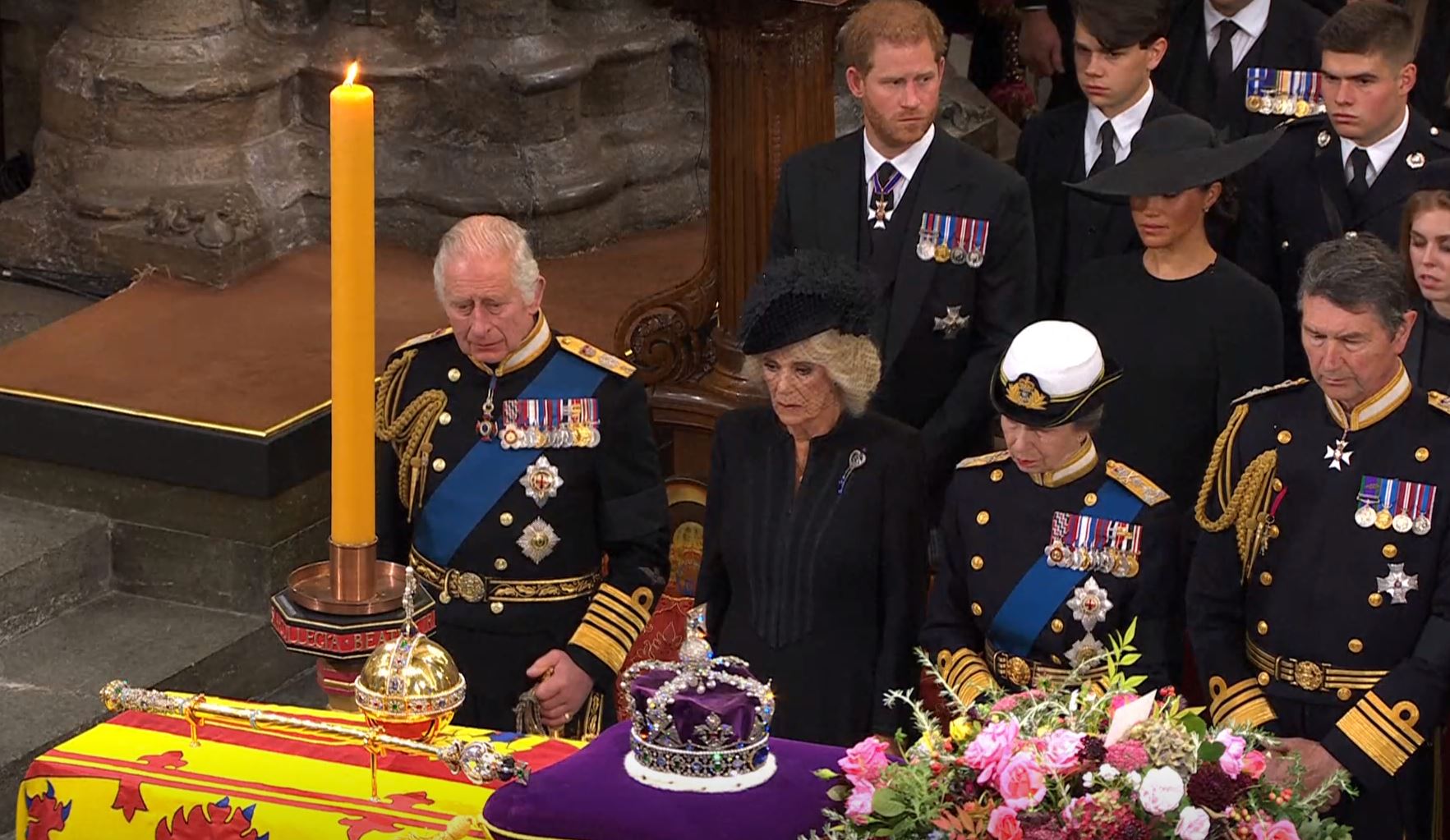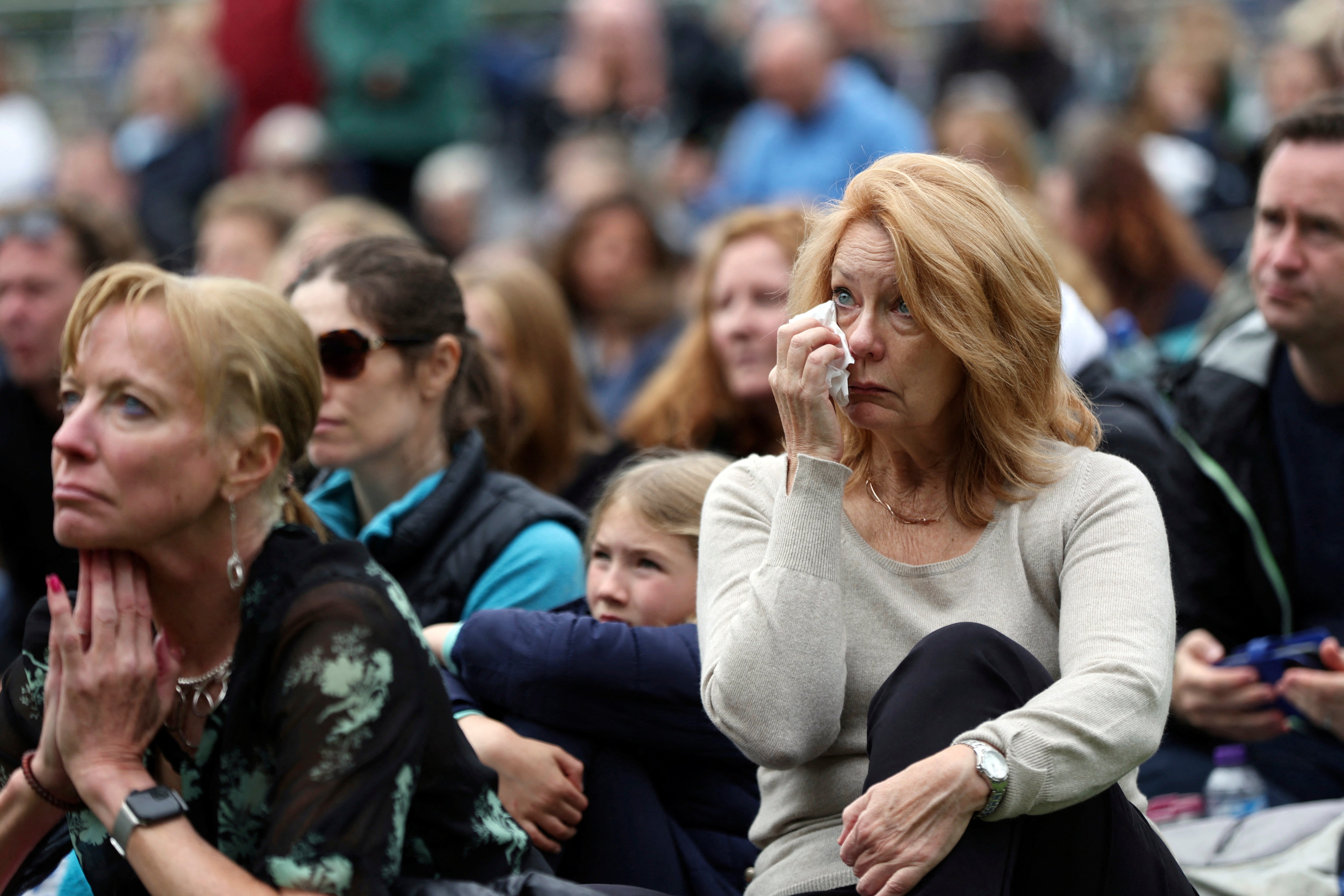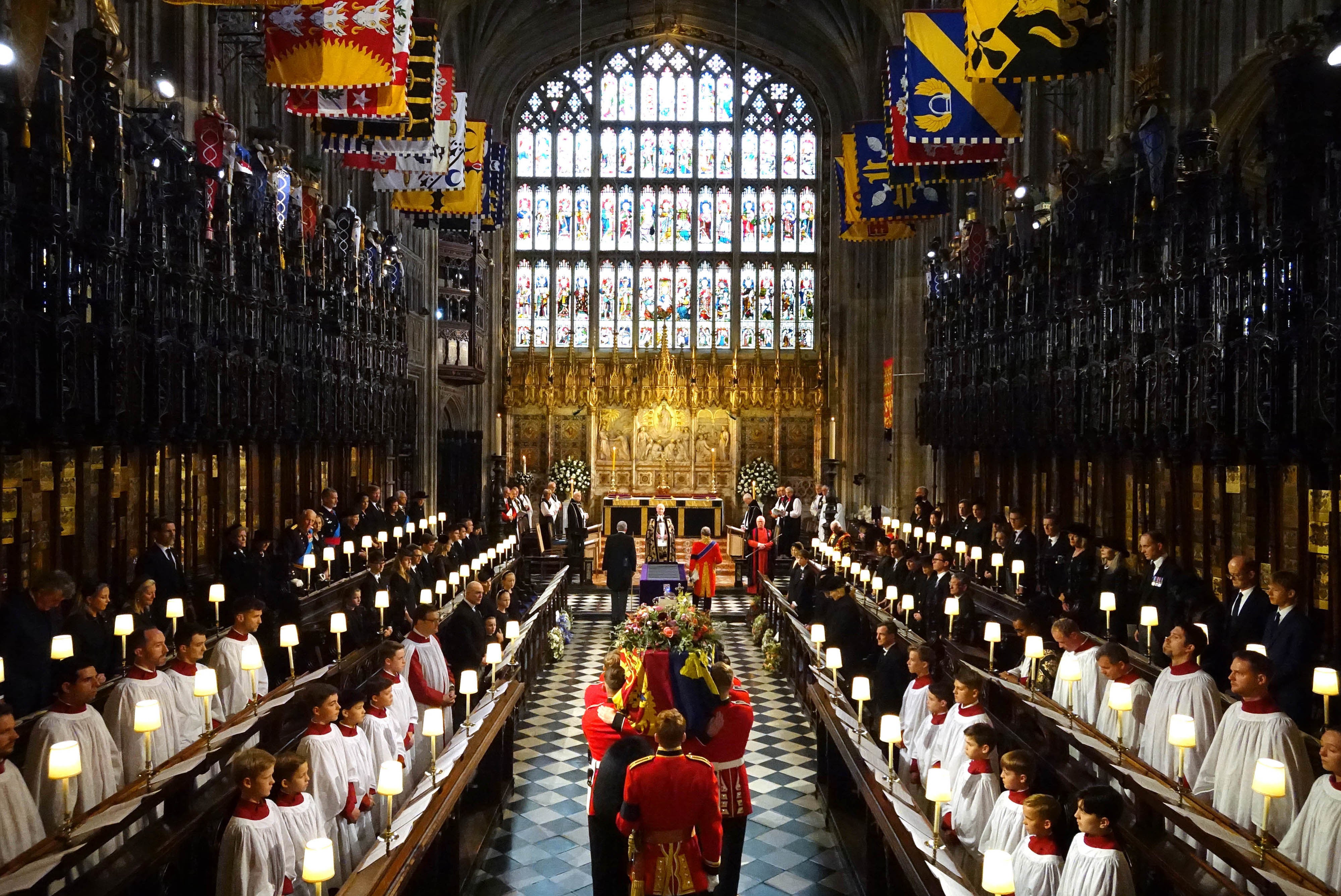Poignant day of pageantry and grief marks end of second Elizabethan age
Three generations of royals joined by world leaders in Westminster Abbey before moving ceremony at Windsor

After 70 years, the final curtain was brought down today on the second Elizabethan age as the Queen was laid to rest alongside husband Philip in her favourite home, Windsor Castle.
An astonishing day of pageantry and processions saw grieving King Charles III joined by monarchs and presidents from around the world as well as the upper echelons of British society in a heartfelt farewell to the UK’s longest-reigning sovereign.
Three generations of royals were united in sorrow as they honoured the service of a queen and remembered the love of a mother, grandmother and great-grandmother known to the youngest in her family as “Gan-gan”.
Westminster Abbey witnessed a gathering perhaps unique in world history, with a congregation of more than 2,000 including Liz Truss and every living former prime minister, US president Joe Biden and scores of world leaders for a televised state funeral watched by hundreds of millions worldwide.
In an atmosphere of deep solemnity and barely suppressed emotion, the Queen’s nine-year-old great-grandson Prince George, now second in line to the throne, could be seen wiping away a tear.
And later, the coffin of Elizabeth II was brought home to Windsor for a more intimate committal service of around 800 close family, friends and retainers in St George’s Chapel.
Finally, a private burial service in the castle’s King George VI Memorial Chapel was reserved for the King and members of the royal family, finally alone with their memories away from the public and TV cameras.
Earlier, King Charles and siblings Anne, Andrew and Edward had paid very public tribute to their mother, walking slowly behind her coffin through the streets of her capital, followed by the princes William and Harry.
Crowds totalling hundreds of thousands lined the route from the abbey past Buckingham Palace to the Wellington Arch at Hyde Park Corner, where the Queen’s coffin was transferred to the state hearse for her final journey by road to Windsor.
And outside the castle, tens of thousands more gathered for the stately procession led by pipers and military bands down the Long Walk, the hearse strewn with flowers cast from the roadside by well-wishers.
In his sermon at the abbey, the archbishop of Canterbury Justin Welby reminded the congregation of Elizabeth’s promise as a young woman to dedicate her whole life to the nation and Commonwealth.
“Rarely has such a promise been so well kept,” said the Archbishop.
“She was joyful, present to so many, touching a multitude of lives.
“People of loving service are rare in any walk of life. Leaders of loving service are still rarer. But in all cases, those who serve will be loved and remembered when those who cling to power and privileges are forgotten.
“The grief of this day – felt not only by the late Queen’s family but all round the nation, Commonwealth and world – arises from her abundant life and loving service, now gone from us.”
At the end of 11 remarkable days of national mourning since her death on 8 September, the archbishop said: “Few leaders have received the outpouring of love that we have seen.”
Welby said he knew that the new King shared “the same sense of service and duty” as his mother.
And to the grieving royals, he quoted the Queen’s consoling message during the Covid pandemic: “We will meet again.”
As the hour-long ceremony drew to an end, the nation fell quiet as the sounding of the “Last Post” heralded a two-minute silence within Westminster Abbey and across the United Kingdom.
Charles, his sombre face bearing the signs of deep sorrow and heavy responsibility, followed the coffin out of an abbey still resounding from thousands of voices singing “God Save the King” and a lone bagpiper playing a final lament.
After lying in state in Westminster Hall for four days as hundreds of thousands of people filed past to pay their respects, the Queen’s coffin was lifted from its catafalque shortly after 10.30am by a bearer party from 1st Battalion Grenadier Guards and placed on the state gun carriage of the Royal Navy.
The gun carriage was removed from active service in 1901 for the funeral of Queen Victoria and has since borne the bodies of kings Edward VII, George V and George VI as well as Sir Winston Churchill and Lord Mountbatten.
It was hauled by 142 Royal Navy sailors in procession to Westminster Abbey, with King Charles, the Princess Royal, the Duke of York and Earl of Wessex following on foot. Princes William and Harry walked side by side behind them, their faces set in solemnity, the Duke of Sussex in civilian dress to reflect his status as a non-working royal.
Prince Andrew – who was denied the right to wear military uniform like his siblings because of the disgrace of his association with Jeffrey Epstein – was visibly fighting to hold back tears.
Joining the procession in the abbey – where the Queen was married in 1947 and crowned in 1953 – were the Queen Consort, the Princess of Wales, the Duchess of Sussex and royal great-grandchildren including George and his seven-year-old sister Charlotte.

Atop the coffin was a wreath with flowers from the gardens of Buckingham Place, Clarence House and Highgrove House bearing a message from the new king: “In loving and devoted memory, Charles R.”
Among those present were scores of world and Commonwealth leaders, including Mr Biden, France’s Emmanuel Macron, Canada’s Justin Trudeau, Australian PM Anthony Albanese and New Zealand’s Jacinda Ardern. Most had arrived at the abbey by shuttle bus to reduce security risks.
At the end of the service, the coffin was raised again onto the gun carriage for a further procession through the streets of London, lined by members of all three military services with arms reversed as a sign of mourning.
As a gun salute was fired in Hyde Park and Big Ben tolled at minute intervals, the senior royals again followed the coffin on foot, with Camilla, Kate and Meghan travelling behind by car.
Enormous crowds massed along Whitehall, The Mall and Constitution Hill, some weeping, some bowing their heads or raising their mobile phones as the cortege passed by, some breaking into applause on sight of the coffin.

Sami Fisk, a 21-year-old student from Clitheroe, came to London with his mum Naima to see the Queen’s lying-in-state on Sunday, before watching the coffin pass along Whitehall.
“What’s amazing is the feeling of unity,” he told The Independent. “To feel united with so many different kinds of people – people of all ages, all colours, all religions, from all over the country, from all over the world – that’s very unusual. And that’s what the Queen represents.”
Vernon Bartley, a 51-year-old bricklayer from Croydon, said he became “very emotional” when the Queen’s coffin passed, comparing it to saying goodbye to a family member.
“I look on her as a godmother, so I had to say goodbye,” he said. “When I was growing up in Jamaica, it was a dream of mine to come to Great Britain. When I came here at 22, I saw the Queen as part of my extended family across the Commonwealth. So it doesn’t surprise me the way people have come together today.”
Thousands arrived in central London too late to get a spot along the procession route. Some struggled desperately to catch a glimpse of the funeral cortege, cutting holes in netting, clambering up railings and pressing themselves into holly bushes along the edge of Hyde Park.
At Windsor, Dean David Conner conducted the committal service in a chapel founded in the 14th century by Elizabeth II’s ancestor Edward III and the site of royal funerals dating back to Edward IV in 1483.

Paying his final respects to the late Queen, the dean said: “In the midst of our rapidly changing and frequently troubled world, her calm and dignified presence has given us confidence to face the future as she did, with courage and with hope.”
At the conclusion of the service, the instruments of state received by Elizabeth on her coronation in 1953 – the orb, sceptre and imperial state crown – were removed from her coffin and placed by the dean on the chapel’s altar.
Apparently fighting back tears, King Charles placed the Queen’s Company camp colour flag of the Grenadier Guards on the coffin. And the Lord Chamberlain, former MI5 chief Lord Parker of Minsmere, broke his wand of office and placed the pieces alongside it to mark the end of his duty as most senior official of the monarch’s household.
Both flag and broken wand remained on the coffin, along with the royal standard, as it was lowered into the royal vault.
Elizabeth II was laid to rest alongside the Duke of Edinburgh in the King George VI Memorial Chapel, which also contains the mortal remains of her parents George VI and Queen Elizabeth the Queen Mother, and her sister Margaret.




Join our commenting forum
Join thought-provoking conversations, follow other Independent readers and see their replies
Comments